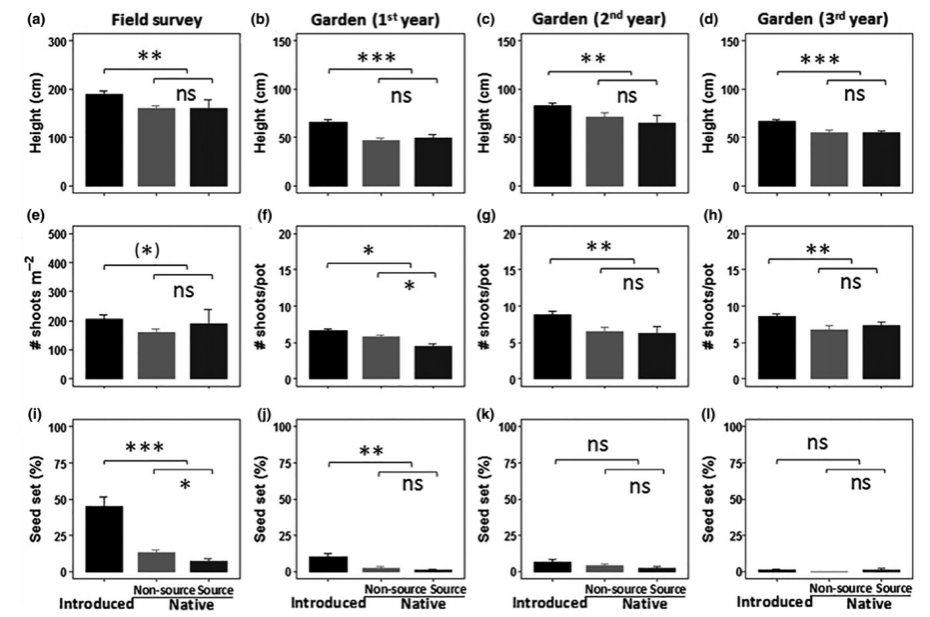Liu W.W., Zhang Y.H., Chen X.C., Maung-Douglass K., Strong D.R. and Pennings S.C.. 2020. New Phytologist, 226(2):623-634.
Biological invasions offer model systems of contemporary evolution. We examined trait differences and evolution across geographic clines among continents of the intertidal grass Spartina alterniflora within its invasive and native ranges. We sampled vegetative and reproductive traits in the field at 20° sites over 20° degrees latitude in China (invasive range) and 28 sites over 17° degrees in the US (native range). We grew both Chinese and US plants in a glasshouse common garden for 3 yr. Chinese plants were c. 15% taller, c. 10% denser, and set up to four times more seed than US plants in both the field and common garden. The common garden experiments showed a striking genetic cline of seven-fold greater seed set at higher latitudes in the introduced but not the native range. By contrast, there was a slight genetic cline in some vegetative traits in the native but not the introduced range. Our results are consistent with others showing that introduced plants can evolve rapidly in the new range. S. alterniflora has evolved different trait clines in the native and introduced ranges, showing the importance of phenotypic plasticity and genetic control of change during the invasion process.

Figure 1. Plant height (a–d), shoot density (e–h), and seed set (i–l) of Spartina alterniflora populations from introduced (China) and native (USA) ranges in the field (a, e, i) and over 3 yr in the common garden (b–d, f–h, j–l). Data are means + 1 SE. Asterisks indicate significance of t-tests between the introduced and native range, and between source and nonsource populations in the native range. ns, P > 0.1, (*) marginal, P = 0.05–0.06; *, P < 0.05; **, P < 0.01; ***, P < 0.001.

